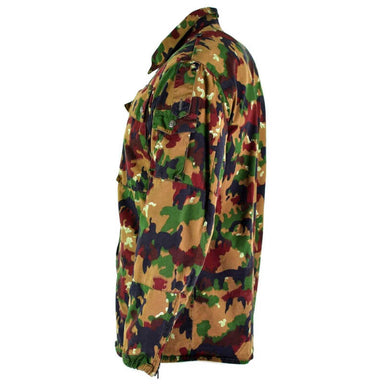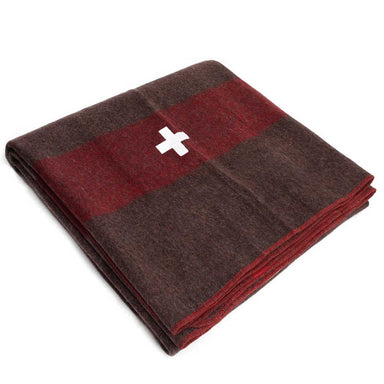
 Sold out
Sold out
Swiss Military | TAZ 83 Alpenflage | Field Jacket
Looking for a great lightweight field jacket? These Original Swiss Alpenflage TAZ 83 / M83 Camo Field Jackets are an excellent choice for use out...
View full details
Swiss military history is characterized by a unique tradition of neutrality, defense strategy, and militia system. Here's an overview highlighting key aspects of Swiss military history:
Medieval Cantons: Switzerland emerged as a confederation of autonomous cantons during the Middle Ages. Each canton maintained its own militia for defense against external threats and internal conflicts.
Battle of Morgarten: In 1315, Swiss forces achieved a significant victory against the Habsburgs at the Battle of Morgarten, showcasing their military prowess and unity.
Mercenary Tradition: From the late Middle Ages to the Renaissance, Swiss mercenaries were renowned for their discipline, combat skills, and loyalty. They served in various European conflicts and were sought after by foreign powers.
Peaceful Coexistence: Switzerland's policy of neutrality dates back to the Treaty of Westphalia in 1648, which recognized Swiss independence and neutrality.
Napoleonic Era: Despite being surrounded by conflict during the Napoleonic Wars, Switzerland maintained its neutrality and avoided direct involvement.
Formation of Federal Army: In the mid-19th century, Switzerland established a federal army based on a militia system. This system emphasized universal military service, where able-bodied male citizens underwent training and kept their weapons at home.
Defense Strategy: Switzerland developed a defense strategy focused on deterrence and mobilization, with strong fortifications (such as the Swiss Redoubt) and readiness to defend its territory.
World War I: Switzerland maintained neutrality during World War I, although it faced challenges with the influx of refugees and economic pressures.
World War II: Switzerland again maintained neutrality during World War II, despite being surrounded by Axis-controlled territories. The Swiss Army mobilized for defense and implemented extensive border fortifications.
Cold War Neutrality: During the Cold War, Switzerland continued its policy of neutrality and maintained a strong defense posture. It invested in modernizing its military and maintaining its militia system.
Peacekeeping: Switzerland has been actively involved in international peacekeeping missions under the auspices of the United Nations, contributing troops and expertise to conflict zones worldwide.
Swiss Armed Forces: Today, the Swiss Armed Forces consist of a well-trained militia supplemented by professional staff. The army focuses on defense readiness, territorial integrity, and disaster response.
Swiss Neutrality: Switzerland continues to uphold its policy of neutrality, playing a diplomatic role in international relations and emphasizing humanitarian efforts and mediation.
Swiss military history illustrates a commitment to defense, neutrality, and national sovereignty, shaped by a strong tradition of militia service and strategic readiness. The Swiss model of neutrality and defense has influenced military strategies and policies worldwide.

 Sold out
Sold out
Looking for a great lightweight field jacket? These Original Swiss Alpenflage TAZ 83 / M83 Camo Field Jackets are an excellent choice for use out...
View full details
 Sold out
Sold out
There has never been a more famous and sought-after blanket than the Swiss Army Blanket. Welcome to the heavyweights! These beauties are 80% fine ...
View full details
